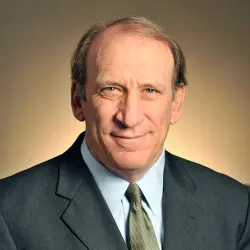Table of contents
- Introduction
- The Broadband Deployment Advisory Committee (BDAC) could serve an important public interest.
- BDAC membership did not equitably represent private and public interests and is myopically focused on only one dimension of the deployment economics.
- The BDAC misjudged the leverage local governments had over private carriers.
- The BDAC created a framework in which one side has all the costs and obligations, while the other side receives benefits without any obligations.
- Will the BDAC’s work lead to higher investment levels?
- What will happen with the BDAC recommendations?
- What could the BDAC have done better to have a balanced framework for deployment?
- Cities should take the lead in developing the framework to deploy next generation networks.
The most significant meta-theme about governance in the United States today is that the federal government is dysfunctional and disrespected, but that local governments are responsive, proactive, effective, and respected in building communities that improve the lives of their residents.
One sees this on the bookshelves, where books on the federal government have titles like “It’s Even Worse Than It Looks” or “It’s Even Worse than You Think,” while books on cities carry titles like “Triumph of the City: How Our Greatest Invention Makes Us Richer, Smarter, Greener, Healthier, and Happier” or “The New Localism: How Cities can Thrive in the Age of Populism.”
It also shows up in the polling data. Journalist James Fallows has a new book about finding resilient civic virtues in how local communities respond to today’s challenges. He reports that “surveys typically find that only a quarter of Americans trust the national government to ‘do the right thing,’ but Gallup polls in 2014 and 2016 found that more than 70 percent trusted their local government to do so.” The same federal–local splits apply to members of both political parties.
Further, as former Indianapolis mayor and now Harvard professor Stephen Goldsmith argues, such numbers may even understate the trust citizens place in local governments. No one is saying the same for the federal government.
I personally see the difference in my own work observing both federal and local government entities. That experience causes me to believe that, both as a philosophical and practical matter, giving local governments more authority and freedom is key to moving this country forward.
A curious contrarian to this view is the current Federal Communications Commission (FCC), which has interpreted its statutory mandate to dramatically reduce its regulatory powers over broadcasters, ISPs, telephone companies, cable companies, and wireless companies, while simultaneously asserting new authority to regulate prices and micromanage the activities of local governments.
A major tactic in the FCC’s effort to regulate cities is through its Broadband Deployment Advisory Committee (BDAC) process. The stated goals of the BDAC are to accelerate and broaden deployment of next-generation broadband networks and reduce the digital divide. I think all would agree those are worthy goals.
However, even if motivated by the right reasons, the BDAC suffers from significant failures of design and execution. Due to these failures, I expect the BDAC and the FCC will adopt a framework in which industry gets all the benefits with no obligations, and municipalities will be forced to bear all the costs and receive no guaranteed benefits. This kind of process will result in a transfer of wealth from public to private enterprises—and leave American cities and metropolitan areas no better positioned to tap into digital telecommunications to unlock innovation and shared economic prosperity. Here I discuss what the BDAC got right and where it veered way off track.
The Broadband Deployment Advisory Committee (BDAC) could serve an important public interest.
Before discussing how the BDAC process detoured from its stated goals, it is important to understand the potential value of such an effort.
The BDAC charter describes its mission: “to make recommendations to the Commission on how to accelerate the deployment of high-speed Internet access, or ‘broadband,’ by reducing and/or removing regulatory barriers to infrastructure investment. This Committee is intended to provide an effective means for stakeholders with interests in this area to exchange ideas and develop recommendations to the Commission on broadband deployment, which will in turn enhance the Commission’s ability to carry out its statutory responsibility to encourage broadband deployment to all Americans.”
No one should object to the second sentence in the mission statement. The mission of accelerated and broader next-generation network deployment is an important goal for the country and one clearly within the mandate of the FCC to evaluate and assist. In this effort, it is valuable to have a multistakeholder group evaluate how to improve deployment incentives. If done properly, such a group would generate ideas that optimize outcomes for a broad spectrum of stakeholders and build a political consensus to increase adoption and implementation of those ideas.
Our country needs to build out next-generation networks, including fifth generation (5G) mobile, the Internet of Things (particularly the Civic Internet of Things that provides intelligence to various networks run by local governments, such as traffic, water, and sewer), and networks to serve big data needs for institutions with missions involving the analysis and transmission of huge amounts of data. These networks all require fiber deployed deeper throughout every community as well as devices, such as radios and sensors, being attached to poles, buildings, and other facilities. Municipal policies provide the principal governmental framework for these activities, including rules governing siting, construction, rights of way, pole access, and building codes and access.
Bringing private and public stakeholders is especially important considering the daunting economics at play. The wireless industry already poured enormous capital into their networks and will now do so again for a 5G network. Anyone who follows the ups and downs on Wall Street understands that companies face a series of challenges ahead. At the highest level, companies have to pour money into new capital expenditures, estimated to be between $130 billion and $275 billion, without any clarity on what will be new revenue sources that do not, in essence, cannibalize existing 4G revenues.
Given the difficult economics, it is important that all stakeholders evaluate different approaches that balance the companies’ desire to lower their capital and operating costs with the cities’ desire to achieve certain policy outcomes, such as public safety, minimal construction-based disruptions, and ubiquitous deployment. Like every other policy initiative, there are trade-offs. The value of a multistakeholder process often resides in being clear and honest about the nature of those trade-offs while letting elected officials, directly accountable to their constituents, determine how they wish to prioritize the various costs and benefits.
We should also acknowledge that the BDAC members and internal FCC staff did hard and honorable work throughout the process. That work did lead to some recommendations likely to serve its goals, such as recommending governments adopt a one-touch, make-ready policy that will speed up and lower the cost of new fiber deployments. The process is also developing some state and local codes, which also hold some value.
Unfortunately, the potential and value of the BDAC was undercut by several high-level errors.
BDAC membership did not equitably represent private and public interests and is myopically focused on only one dimension of the deployment economics.
The BDAC is a multistakeholder group, which should have been designed to generate ideas that optimize outcomes for all stakeholders and build a political consensus that makes it more likely that those ideas will be adopted and implemented successfully. Unfortunately, the FCC overwhelmingly filled the BDAC with industry representatives.
Three-quarters of the BDAC membership works for telecommunications companies, trade organizations that represent these companies, or think tanks that have consistently opposed regulation of private telecommunications providers. Only 10 percent of the original members were from city or state governments, and there were neither academics nor think tank persons whose views would be considered neutral or pro-municipal rights.
It wasn’t just cities that were underrepresented. Electric utilities, for example, own 65 to 70 percent of the utility poles in this country, a critical asset in deploying any next-generation broadband network and particularly critical to deploying the micro-cell radios on which 5G wireless networks will depend. Yet those utilities only had two seats on the BDAC.
Further, instead of treating cities as the legitimate representatives of the constituencies that elected them, FCC officials argued that local representatives may not know what is best for their local constituents. Responding to the complaint that the BDAC was composed almost entirely of industry representatives, a key FCC official admitted that the FCC didn’t really care about what cities thought, saying, “we didn’t want to choose someone from, say, a municipality that needs a blueprint, because they’re not going to be the ones to help design that blueprint.” An FCC commissioner justified preemption of cities on the grounds that cities were trying to “impose their will” on carriers. This is more than a bit odd considering unelected bureaucrats at a federal agency preempting elected local officials is the textbook definition of imposing one’s will. Among the people the BDAC relied on was Gary Jabara, CEO of Mobilitie LLC, one of the nation’s largest operators of cell towers, who said local officials opposing the changes didn’t give “a s–t about their constituents.”
The BDAC, if it had included a fair representation of local officials and if it had begun with an open mind about how best to proceed, would have been far more persuasive to cities than the “my way or the highway” approach that FCC officials and their appointees suggested. The process might then have considered many issues that were largely ignored, such as cities’ concerns over the engineering, public safety, aesthetic, property value, rate design, and other significant consequences of small cell facility siting. It would have considered more carefully the discrepancy between what the industry describes as a small wireless facility being no larger than a pizza box and many examples of state legislation that defines a small wireless facility as six cubic feet, roughly 10 to 60 times the size of a pizza box.
It would have also considered issues beyond municipal policies. The bias in the BDAC member composition was also reflected in the mission statement’s first sentence, which suggested that the only way to drive new deployment is through reducing regulation. By discounting the views of cities while focusing solely on what cities can do to lower costs, as opposed to starting with an open and comprehensive analysis, the BDAC ignored significant opportunities to achieve its stated goals. For example, a recent McKinsey report suggested that network sharing could save 40 percent of the cost of deployment, a figure far larger than the potential savings involved with the BDAC recommendations. While FCC officials express great concern about the threat of China deploying 5G faster than the US, they seem ignorant of China’s network sharing policies. That blindness infected the BDAC framework.
In short, the BDAC did not undertake a comprehensive assessment of options and trade-offs and therefore undercut its potential to build political capital for a balanced and optimal set of solutions. Rather, it spent its political capital reinforcing a political narrative about how cities are the cause of delays in 5G deployment, while ignoring the need to build political capital among cities that would have actually resulted in faster, better, cheaper broadband.
The BDAC misjudged the leverage local governments had over private carriers.
The BDAC started from the false assumption that industry does not have the leverage to negotiate the deals it needs to make investments in new networks. In decades past, such as when Verizon was building out its Fios networks, cities had significant leverage over the carriers. However, things changed significantly with Google Fiber, which began in 2010.
Google tied its willingness to build a next-generation fiber broadband network to the willingness of cities to adjust their policies to lower the cost of construction and operations. When 1,100 communities indicated their willingness to do so, it was evident the leverage had shifted. Google adroitly used the scarcity value of the limited build-out as a way of changing local government incentives. The deal that Google struck with its initial city, Kansas City, became a model for how other cities could address the needs of those wanting to build gigabit capable fiber networks. As the then head of Google Fiber testified before Congress in 2011, there were a number of regulatory issues that needed to be addressed before the economics became viable for next-generation network deployments, but the company had the leverage to obtain an agreement with Kansas City that addressed those issues. That model improved as it was incrementally revised as Google struck deals with additional cities.
AT&T and CenturyLink used a similar method for their fiber efforts, as did numerous smaller providers. The Gig.U project I worked on helped facilitate a number of deals between various providers and college towns, each building on the lessons learned from the prior deals.
Verizon is now able to negotiate acceptable next-generation network deployment deals with communities like Boston for policies that lower deployment costs. As Verizon’s CEO Lowell McAdam recently noted, “Cities are embracing us to come in and provide this broadband service for the citizens… More and more people are moving into cities and they need to have smart city applications, including smart transportation, smart lighting, and smart parking services so they’re embracing us coming into their communities.”
5G does have differences from fiber deployments, such as Google Fiber, as by necessity it has to be more broadly deployed for the economics to work. But in their initial deployments, the 5G carriers have the same kind of scarcity leverage Google and others building out fiber enjoyed. For example, while Verizon said it will consider every market for a 5G build, McAdam said it would walk away from cities that want too many concessions, adding, “there’s no market that’s not on the table.”
The piece de resistance demonstrating the ability of carriers to work things out with cities without federal interference involves AT&T and San Jose. They were antagonists in the BDAC process, with AT&T generally supportive of it and the Mayor of San Jose, one of two big city representatives, resigning and blasting the process. He observed, “At the 11th hour, we saw industry rewrites that pushed aside everything that had been negotiated for an industry-friendly, cookie-cutter set of rules.” (The other big city representative, from New York, resigned for the same reason.) But the two parties were able to work out a deal that San Jose felt was fair and allowed AT&T to deploy. Notably, the deal included AT&T contributing to a digital inclusion initiative and to help the city pay for accelerated permitting.
If the carriers were going to build everywhere in a compressed timetable, there would be a good argument for a national, standardized approach. But that is not what is going on. The deployment will likely be slow and targeted. For example, Verizon went from having 11 test cities in 2017 to announcing a launch of three to five cities in 2018. AT&T will only be building out to a dozen cities in 2018. Sprint announced it would build out to six cities by the first half of 2019. The most aggressive in terms of number of cities covered, T-Mobile, announced that it would build out to 30 cities this year without citing any changes in city policy as the prerequisite for being able to do so.
Given the limited number of cities and the pace of the rollout, companies will continue to have leverage for some time to come. As those trials hopefully prove successful, other cities will be more anxious for having such networks and be willing to reach reasonable accommodations to make the economics more attractive. The power of best practices, as Larry Downes and I discussed in The Washington Post, should help all sides come to a reasonable accommodation.
Cities are proving far more interested and effective in improving their performance than the federal government. Take, for example, the reaction to the losing cities in the competition for Amazon HQ2. The cities and Amazon had follow-up conversations about what the losing cities were lacking, and a number of cities have set out to address those particular deficiencies in attracting technology-related economic development opportunities.
Let’s engage in a thought experiment: What if the FCC in 2011 had said that fiber deployment was critical to the future security of the United States and therefore mandated that every city should give Google Fiber the same deal that Kansas City gave Google? I am certain that there would have been a huge uproar with all saying that such a mandate is crazy, unnecessary, and a clear usurpation of local power to benefit a large private enterprise.
That is, however, what the BDAC/FCC process appears to be moving to—a single federal mandate for how cities should price their rights of way and manage local construction for the benefit of a select group of companies.
The BDAC created a framework in which one side has all the costs and obligations, while the other side receives benefits without any obligations.
I am often a big fan of asymmetry. In 10 years of practicing corporate law, as well as in being involved with dozens of deals between cities and next-generation network providers during the heart of the Gig.U effort, I saw how every successful deal involves asymmetric value creation.
That is, the two sides don’t want the same thing. So, the trick is to find the things that cost side A little and create considerable value for side B, with side B doing the same for side A. Both, in this way, get more than they give. That asymmetry of value creation is hugely powerful.
The BDAC, however, ignored this kind of value creation. Instead, it focused exclusively on what cities could do to improve the profitability of the carriers. In so doing, the BDAC demonstrated a peril inherent in a complete asymmetry of rights, obligations, and risk allocation.
Under the BDAC/FCC framework, cities will bear significant costs. For example, the framework calls for cities to take a number of actions, including lowering their prices for rights of way and other permits, bearing the cost of higher administrative capacity for accelerated permitting, undertaking to gather and provide certain kinds of information, and engaging in administrative flexibility, at whatever cost, when industry requests don’t fit easily into the current municipal framework. The framework suggests that the federal government has a right to preempt any city decisions that don’t accord with the federal view of how the city should administer its oversight of deployments.
In contrast with the mandatory nature of the cities bearing these costs, the BDAC framework enables carriers to get the benefit of lower costs without any obligation to deploy anything. Others who use similar public property will also likely obtain rate reductions without doing anything new in the public interest.
In its embrace of shifting the costs to the cities, the FCC is the archetypical bad actor in the problem discussed in Nassim Nicholas Taleb’s new book, Skin in the Game: Hidden Asymmetries in Daily Life. The book’s fundamental message is that it’s morally wrong to enjoy the benefits of something while leaving others to accept all the risks, exactly what the FCC is doing to cities.
Taleb makes many observations relevant here, such as: “Do not pay attention to what people say, only what they do, and to how much of their necks they are putting on the line.” Here, the FCC is putting nothing on the line; it is only requiring that cities put their funds and property on the line.
Will the BDAC’s work lead to higher investment levels?
Advocates for this asymmetry argue that the lower costs for carriers will lead to greater deployments.
Only in Washington do otherwise intelligent people believe that lower costs for businesses automatically lead to commensurate capital investment. The FCC commissioners who argue that cutting rights of way fees will automatically lead to new capital investment are at risk of being like former National Economic Council head Gary Cohn, who appeared surprised when a group of CEOs indicated they were not going to use their tax cuts primarily for new investment, which many have argued is exactly what happened, with stock buy backs breaking historic records and vastly outweighing new investments. As even The Wall Street Journal recently noted, the “renaissance in capital spending the tax cut was supposed to bring about isn’t showing up in the economic data.”
Carriers have the same incentives as other corporate entities. As one can see with Verizon’s own statements, stock buybacks, debt reduction, or dividend support are probably higher priorities than investments in 5G networks.
Verizon should not be criticized for having investment priorities that reflect financial realities. Given the many uncertainties, from the ability of carriers to get customers to switch to 5G phones to the vague business model, Wall Street is skeptical about the economic returns of 5G. So are the companies. Consider how the current Chairman of Huwaei recently said consumers would find no material difference between 5G and its predecessor, 4G LTE, or how Ericsson downplayed 5G expectations. Consider how AT&T articulated the justification for spending $85 billion to buy Time Warner Entertainment in the antitrust trial. While mobile is important to them, the upgrade to 5G is not nearly as important as having a direct data and content connection to the customer. Another data point is AT&T’s CFO John Stephens comments to Wall Street about the prospects for 5G: “We’re not as excited about the business case—it’s not as compelling yet, for us, as it may be for some.” In their merger announcement, T-Mobile and Sprint basically laid out a case that the only way to drive investment in 5G would be for the government to allow concentration that it did not deem wise in the 3G and 4G markets.
None of these alone provides a perfect map of the future of 5G, nor do these suggest that our country should abandon efforts to facilitate 5G deployment, particularly when it comes to federal assets, such as spectrum or siting networks on federal buildings and land. But these data points are at odds with the picture the FCC is painting to justify its takeover of local government management of rights of way and construction. Nor is the FCC doing anything that fundamentally changes the incentives regarding deployment.
What are those incentives? Right now, the economic incentives are such that carriers are only likely to build 5G networks in higher density areas with access to low-cost fiber. That is far from everywhere. Deloitte estimates it will take $130 billion to $150 billion to provide the necessary fiber for universal 5G. Accenture pegs the number at $275 billion. Those investments are likely to start in areas with existing fiber. Which is exactly the pattern a study by Next Century Cities already found with small cell deployments overwhelmingly going to larger cities with pre-existing fiber and far less in smaller cities without fiber.
Further, the economics of 5G work best where there are multiple places to place transmitters. This is true of areas with tall rooftops and towers, such as downtown areas or those with lots of apartment residents. It is not true of single-family home suburbs, exurban, and rural areas. 5G deployments are not likely to be universal, including within cities.
Take, for example, where I live in Montgomery County, Maryland. Mobilitie LLC, the largest privately held wireless infrastructure provider in the United States, submitted to the county an unofficial plan for small cell sites. Of Mobilitie’s 215 proposed small cells in the plan, only 11 are in areas with fewer than 1,000 people per square mile. More than 94 percent are proposed for areas with higher population densities.
Officials at the FCC and carrier representatives will say I am wrong about the beneficial impact of the BDAC recommendations on investment. They may be right. We are talking about the future. No one has a perfect crystal ball. I would not mind being wrong; competitive 5G networks everywhere sounds good to me.
Here is how you will know if I am wrong: if industry executives, in meetings with Wall Street, say that as a result of the FCC rules our company is increasing our capital budgets by tens of billions of dollars, and further, we commit to building out 5G to a large defined area by a date certain.
They haven’t said that; nor are they likely to do so. Why say something that might crash their stocks when the FCC has already signaled it will give them everything they have asked for and ask for nothing in return?
What will happen with the BDAC recommendations?
The BDAC will make its recommendations, the FCC will adopt the ones related to federal action, and we will enter a phase of litigation in which cities and carriers do what litigants do—figure out ways around the rules (like states are doing with the FCC’s net neutrality framework), and ways to gain leverage over the other, instead of focusing on collaborating on common goals. In some communities, carriers may deploy a bit more and a bit faster than they would have otherwise, but the primary use of the new dollars will be to serve balance sheet, not deployment, objectives.
An additional potential downside is that the now problematic relations between the carriers and the cities may result in a slowdown on other fronts, such as Verizon and AT&T’s welcome efforts to enter the smart city market. There are some very exciting products and services that the wireless industry is in the best position to offer cities. Friends in the wireless industry argue that cities, when buying such services, should ignore the role the industry played in advocating an anti-city agenda in Washington, D.C. Hoping that the cities will adopt a “let bygones be bygones” approach might work, but it is contrary to every bit of my experience of how people in the real world act when they feel they are being stabbed in the back.
What could the BDAC have done better to have a balanced framework for deployment?
While there are some counter-examples, overall, cities have shown that they have been accommodating when there is a guarantee that the desired build-out will occur. But here, there is no guarantee.
If, however, the FCC were to be analytically coherent about its stated goals on deployment and overcoming the digital divide, it would encourage the BDAC to include provisions to assure that its proposed wealth transfer mandates at least guarantees to the desired public benefit, instead of just guaranteeing benefits to private enterprises.
It could easily do so with two provisions. First, it could require that carriers seeking to take advantage of any benefit of federal preemption must commit to an enforceable obligation to build out everywhere in the jurisdiction within a reasonably short period of time. In addition, or alternatively, the FCC could rule the preemption shall not apply to communities that have their own plan to address the digital divide where those plans are inconsistent with preemption.
As to the first, I generally oppose build-out requirements, as they are inhospitable to new entrants and network upgrades. But I am even more opposed to one side giving the other side money based on a non-enforceable promise.
Here, the FCC is supposed to represent the public, yet it takes money from the public without any guarantee the public will benefit. So, if the FCC adopts a framework preempting cities, then I have to abandon my opposition to build-out requirements, as the only way to assure an actual deployment under these market conditions is to have some kind of build-out requirement.
As to the second idea, I have been in discussions with a number of cities that wish to provide an attractive investment climate for 5G networks but also seek to assure that under-adopting communities receive the benefit of the new services. These communities are exploring a number of techniques, such as pricing permits in less attractive areas significantly less than the more attractive areas or prioritizing permitting requests that are in areas of under-adoption.
We have already seen an example of this in the deal between San Jose and AT&T discussed above. The Mayor of San Jose resigned from the BDAC due to what he thought was an unfair process. In resigning, he noted that the BDAC process “did not craft a single measure that identified a new or substantial source of new funding” for bridging the digital divide. Yet when he negotiated directly with AT&T, he was able to obtain a local fund to address the digital divide.
The BDAC recommendations would make such efforts to address the digital divide ineffective if not illegal. I cannot predict with confidence how many cities would undertake such efforts. However, I can predict with confidence that any such local led efforts are more likely to narrow the digital divide than the current BDAC recommendation, which provides an economic incentive to cherry pick deployment targets.
Another interesting market example is what happened in Lincoln, Neb. in 2015. There, officials were negotiating with Verizon over how much the city would charge the company to attach small cells to municipal property. The city offered to charge the carrier a low annual $95 fee—if the carriers would commit to deploying broadband in rural areas in Nebraska. Over the next two years, Lincoln offered the same deal to other carriers and builders.
The companies, understandably, said they couldn’t commit to anything. So, Lincoln went ahead with an agreement that had the companies paying $1,995 a year to attach small cells to city poles, more than 20 times as much. But if the FCC had had its way, Lincoln would have gotten less money, and the rural communities would have received no new deployments anyway.
Cities should take the lead in developing the framework to deploy next generation networks.
While my proposals would provide incentives to achieve the stated goals of the FCC, I am under no illusion that this commission will adopt them. Unfortunately, the BDAC process suggests instead that the FCC itself is under the illusion that it has perfect foresight as to how best to deploy networks, utilize municipal assets, and manage construction, and further that there is one way that fits all situations.
This is at odds with what Google Fiber and similar efforts taught us about how to improve how cities interact with carriers. Encouraging such competition, studying the results, and shining a spotlight on what works best for all stakeholders will drive better results over time.
The FCC’s top-down, one-size-fits-all approach won’t. As the conservative political analyst Yuval Levin wrote in his book Fractured Republic, “The absence of easy answers is precisely a reason to empower a multiplicity of problem-solvers throughout our society, rather than hoping that one problem-solver in Washington gets it right.”
Unfortunately, this FCC does not apparently understand that conservative wisdom. It is a bit odd to hear from unelected officials who preach regulatory humility telling elected officials how to do their job. It is also unwise. We actually don’t know the many ways, not to mention the best way, for these networks to be built.
In light of the BDAC’s one-sided approach, it would be wise for cities to establish their own working group to establish best practices, work collaboratively to find solutions to new problems, and generally lower the cost of deployment. The carriers are the cities’ policy opponents at the FCC, but they are not the cities’ enemies, just as the cities are not theirs. The carriers have the potential to bring enormous benefits to local communities, but the path is not easy for either side. It would be better to start fresh and walk that path together.
It is unfortunate that the BDAC did not effectively do the job it should have done in forging a multistakeholder consensus. But a city-organized effort would likely be more legitimate, more practical, and could actually be an important catalyst for asymmetric value creation in driving new deployment and addressing the digital divide. Indeed, cities already have a number of models, from Sacramento to Lincoln to Boston, of carrier/municipal collaborations that have led to deployments. In contrast to the BDAC model, these are models that attempt to create benefits for both sides, not just one. In contrast to the FCC process, these models involve deals where both sides had skin in the game and were willing to compromise to make sure that both sides appropriately shared benefits and obligations.







